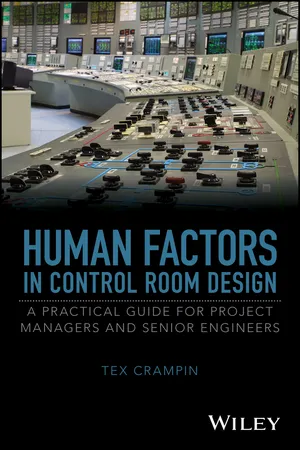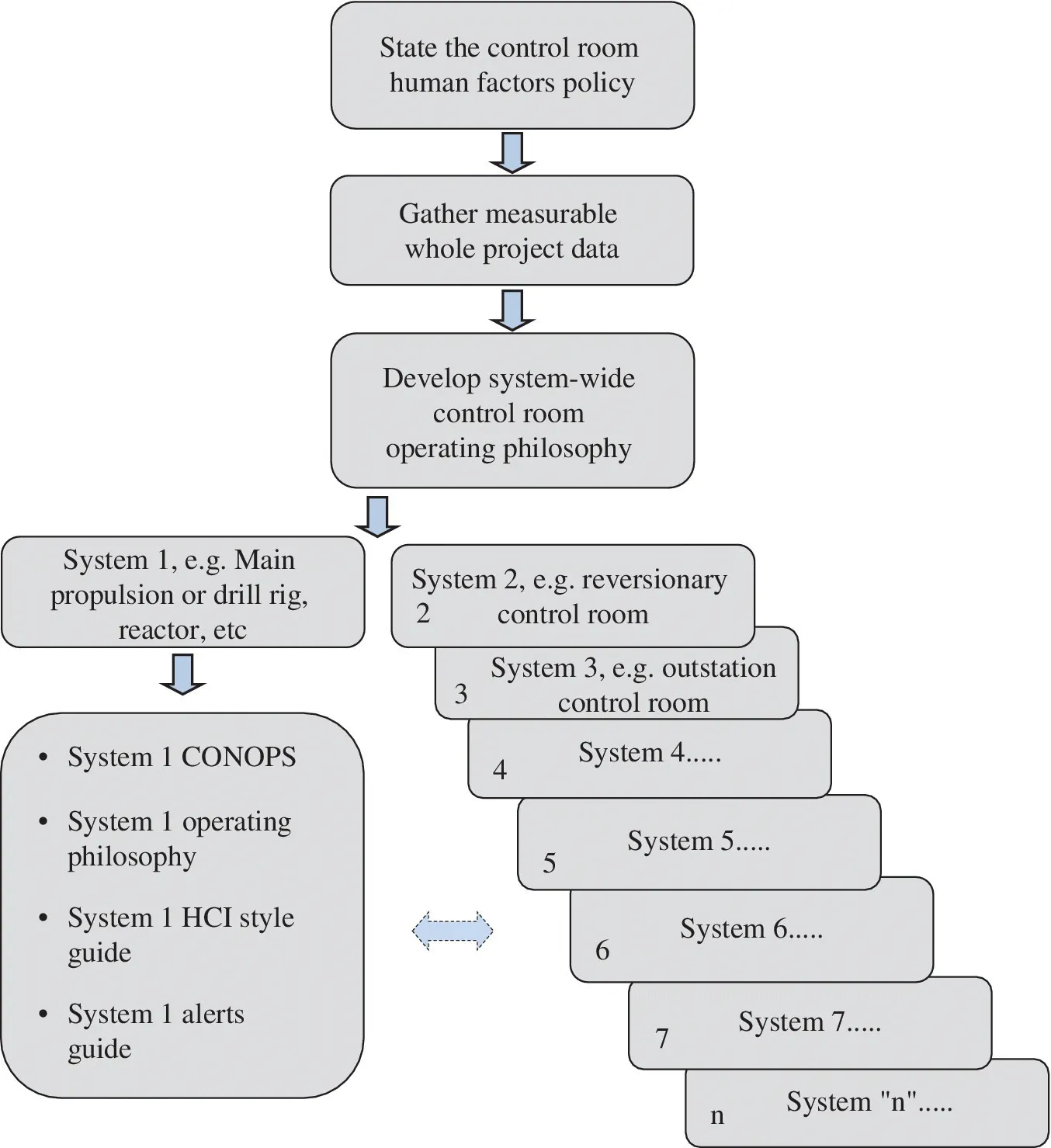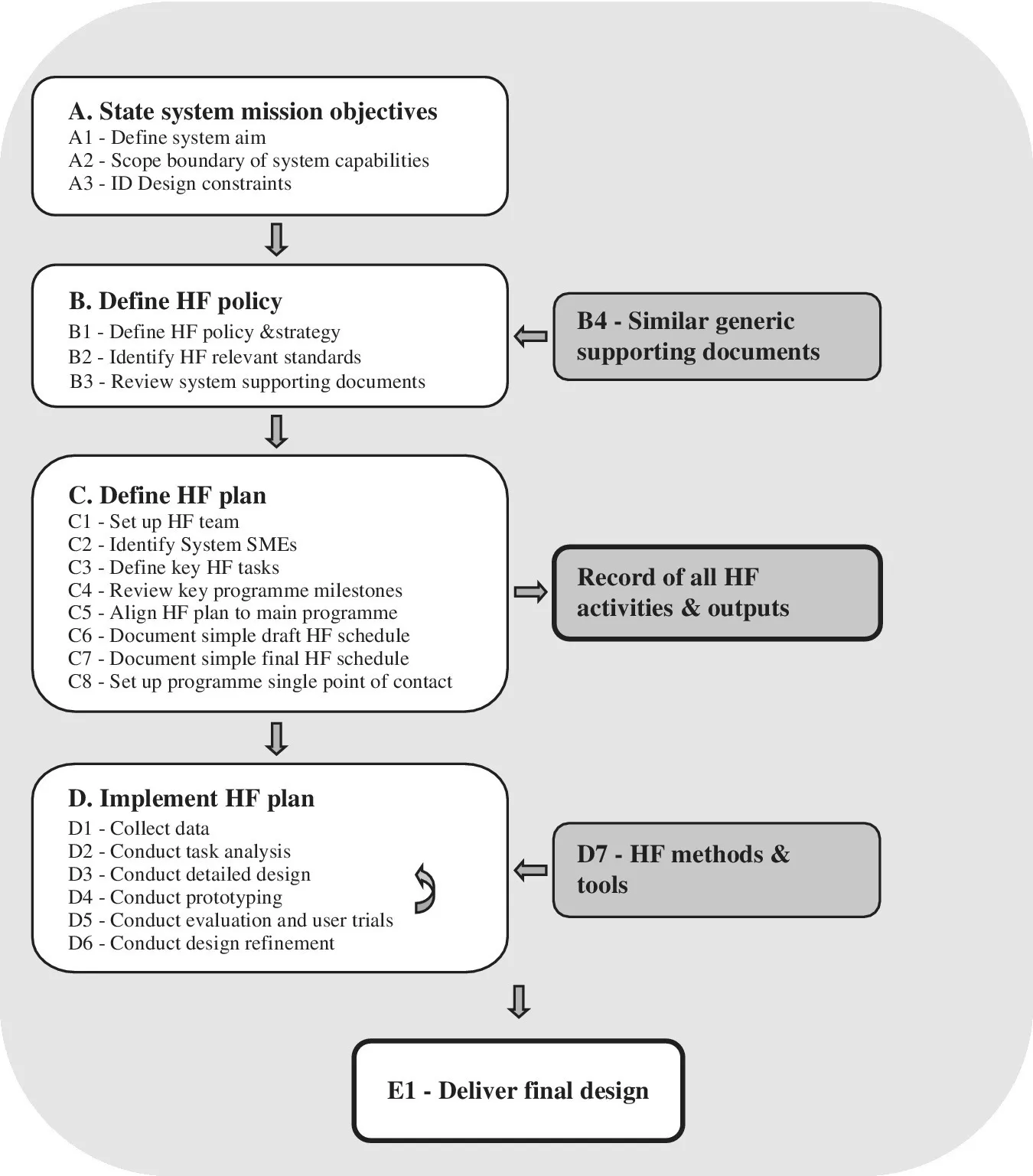
Human Factors in Control Room Design
A Practical Guide for Project Managers and Senior Engineers
- English
- ePUB (mobile friendly)
- Available on iOS & Android
Human Factors in Control Room Design
A Practical Guide for Project Managers and Senior Engineers
About This Book
A succinct guide to a Human Factors programme of work
This book provides a reference for project managers to assist in identifying the key rudiments of good Human Factors design. It is intended to be used in conjunction with an appointed Human Factors manager as part of a detailed design programme, read by all engineers and designers in order to establish a wide understanding across the whole team of the importance of Human Factors.
Human Factors in Military and Industrial Control Room Design offers succinct advice, tailored for rapid injection into complex Human Factors programmes, together with applicability to any control room design, military or industrial. Applications include warship control rooms, command centres, fire and accident response centres, chemical plants, nuclear installations, oil rigs, refineries and other similar industries.
Key features:
- A template for a thorough Human Factors programme of work.
- Applicability to any control room design.
- Aims to address operator workload and optimise system performance, comfort and safety.
- Can save significant costs by optimised system integration and enhanced system operation.
It is advised that project managers use Human Factors in Military and Industrial Control Room Design as a template to develop a control room "Operating Philosophy" and "Human Computer Interface (HCI) Style Guide" for their own purposes within the constraints of their specific industry.
Frequently asked questions
Information
1
Introduction to the Guide
1.1 Purpose and Scope
2
HF Design Process
2.1 Outline Design Process

2.2 Detailed Design Process

- A State System Mission Objectives
- A1 Define System Aim – Define the overall aims of the system in terms of what both the equipment and operators are striving to achieve. For example, to provide control and surveillance of all manufacturing processes in order to achieve maximum productivity, safety and user comfort.
- A2 Scope Boundary of System Capabilities – Draw the whole human‐machine system on one sheet of paper, ready to be broken down into human and machine elements through Task Analysis (see D2 below).
- A3 Identify Design Constraints – Identify any design constraints that dictate the direction of the design. For example, a need for retained or reduced manning; a need for similar interface design to other plants in order to reduce training overheads, etc.
- B Define HF Policy
- B1 Define HF Policy and Strategy – Define the extent of HF involvement and the HF strategy in terms of how HF services will be implemented. For example, ascertain whether there is a policy to reduce manning, introduce touch screen HCIs and reduce workload within one of the highly critical Control Room processes, etc.
- B2 Identify Relevant HF Standards – Identify and list the key HF Standards relevant to the design within the industry concerned. For example, DefStan 00‐250 and 08‐111 for military systems, existing standards in the Oil or Chemical businesses, etc. The purpose of this HF Guide is not to review standards; this mus...
Table of contents
- Cover
- Title Page
- Table of Contents
- About the Author
- Preface
- 1 Introduction to the Guide
- 2 HF Design Process
- 3 Workspace Human Factors
- 4 Human-machine Interface Design
- 5 Human-computer Interface Design
- 6 Environmental Ergonomics
- 7 Training
- 8 Assessment and Acceptance Testing
- References
- Index
- End User License Agreement